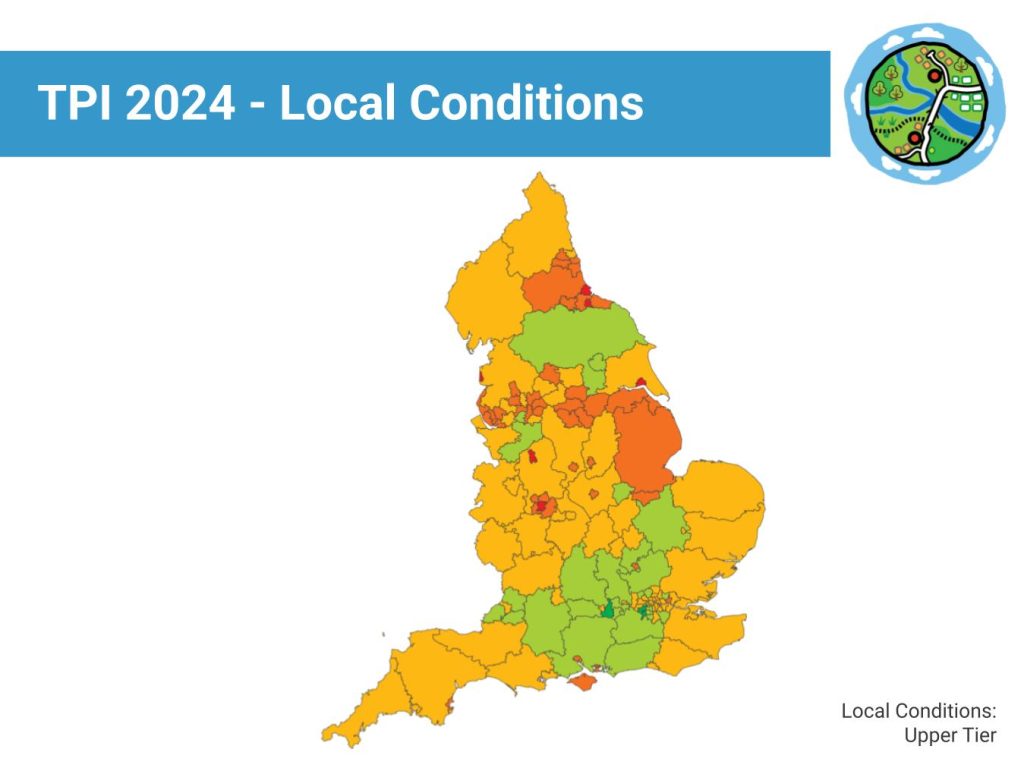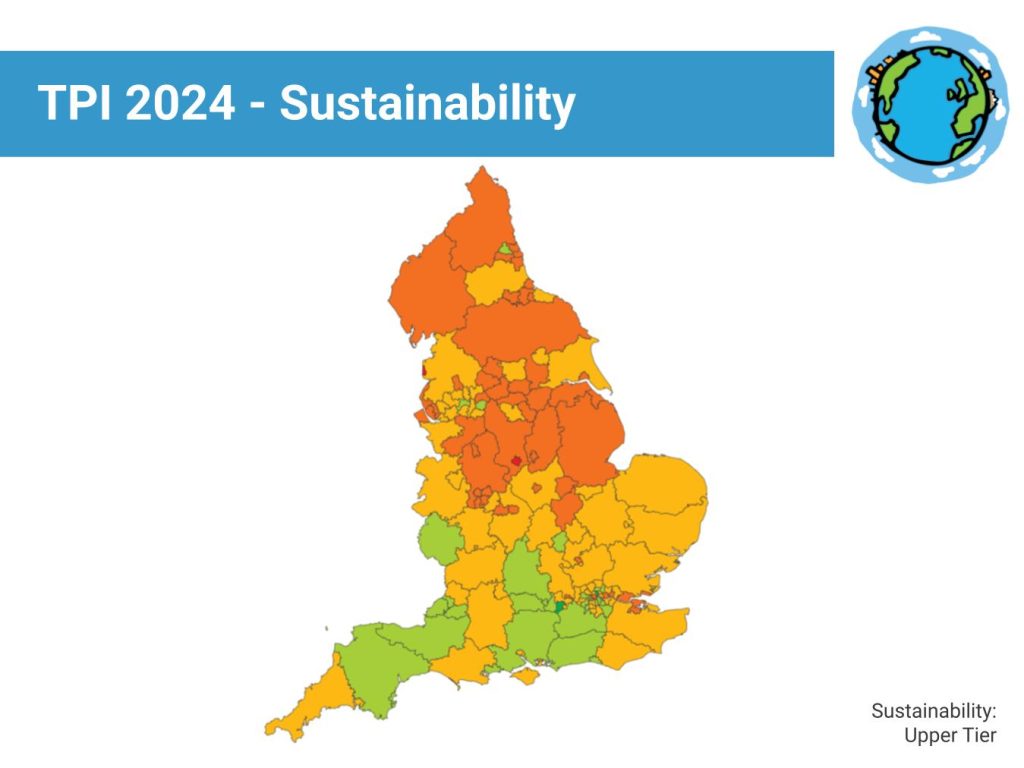• The blog below by Liz Zeidler first appeared in the Municipal Journal on 2 October 2024.
The Thriving Places Index data 2024 has been released for England. Liz Zeidler, co-founder of the Centre for Thriving Places, talks about how the dashboard supports councils across the UK to lead their cities and regions towards a radically different future.
This Autumn party conference season is awash with talk about the need for a change of direction. Looking around our towns, cities and communities it would be hard to disagree. We urgently need to steer away from our current course, which continues to drive us headlong into spiralling poverty, social unrest and climate catastrophe.
Distracted by who is buying the specs for those at the top, all parties are in danger of looking at our future through some very old and broken lenses.
When changing direction you first need to agree on the destination.
The machinery driving our government and economy is currently pointing towards the single goal of economic growth. The dashboard, satnav and speedometer are focused on how fast we are getting there, regardless of the fact that every other dial on the dashboard is showing we are accelerating towards a social and environmental brick wall.
The politicians are right about the need to change direction. We need to grow something bigger than our capacity to produce and consume more ‘stuff’. We need to not just fiddle with the dials but completely change the compass.
This was clear when we founded the Centre for Thriving Places back in 2010. We were heading into that wall even then, and we were confident that we couldn’t afford to wait for governments worldwide to wake up before we crashed collectively into it.
We set about developing a new compass and a different dashboard, designed for local places UK-wide. A practical tool for local governments and cross-sector leaders to use to focus all their work on a different end goal – the creation of thriving places.
The Thriving Places Framework, and the data and index beneath it, is a result of that work. Thousands of people, from academics, people in local government, schools, businesses and community centres contributed to creating it and a growing number of them are now using it to guide their decision-making. It collates the many interconnected factors that research, evidence and ordinary people told us matter most to their place’s capacity to thrive, now and into the future.
The Thriving Places Index (TPI) asks three key questions. Are we creating the right local conditions for people to thrive? Are we doing that equitably? Are we doing that sustainably? Beneath those headlines though is a nuanced and detailed picture of the multiple interconnected drivers of our capacity to thrive, and the dashboard highlights how we are doing against each of the outcomes that matter most to people’s lives.
The latest data shows us still steering away from where we need to be. A stark north south divide is apparent in almost all domains. There is still entrenched inequality and sluggish green growth. But within that there are pockets of hope, lessons to learn, and signs that some places are pioneering a different course.
Within the three ‘headline’ domains of Local Conditions, Equality and Sustainability there are clear national patterns, as well as fascinating local nuances (below).



Within sustainability, the top scorer is Islington followed by Bracknell Forest and Haringey (right). Semi rural authorities like Surrey and rural areas like Devon and North Somerset do well, as do more geographically dispersed urban areas like Salford and Bristol.
Once you look at a more granular level at local areas, and specific outcome domains, there is much more to be learned.


At a district level the variations are even more stark and the individual indicator data within each subdomain tells a rich and valuable story. The images (left) highlight regions where there are notable differences in the mental and physical health indicators across districts, often close together.
A radically new direction is no longer a pipe dream. Pioneers of the Thriving Places approach – and similar local approaches – told their stories in the new Wellbeing Economy in Action report released alongside the Index data. One of those leaders urged the use of a place-based approach to get the best value from public money spent in the locality. ‘Public money is finite and must be spent wisely. Don’t throw it down the drain. Use this framework!’
Local leaders are using this new compass already, and everyone can use the dashboard to find out how much their local area is thriving. Let’s hope national politicians will soon follow, listening and learning from the local places leading the way.
Liz Zeidler, CEO
Main photo by Jamie Street on Unsplash



Comments are closed.